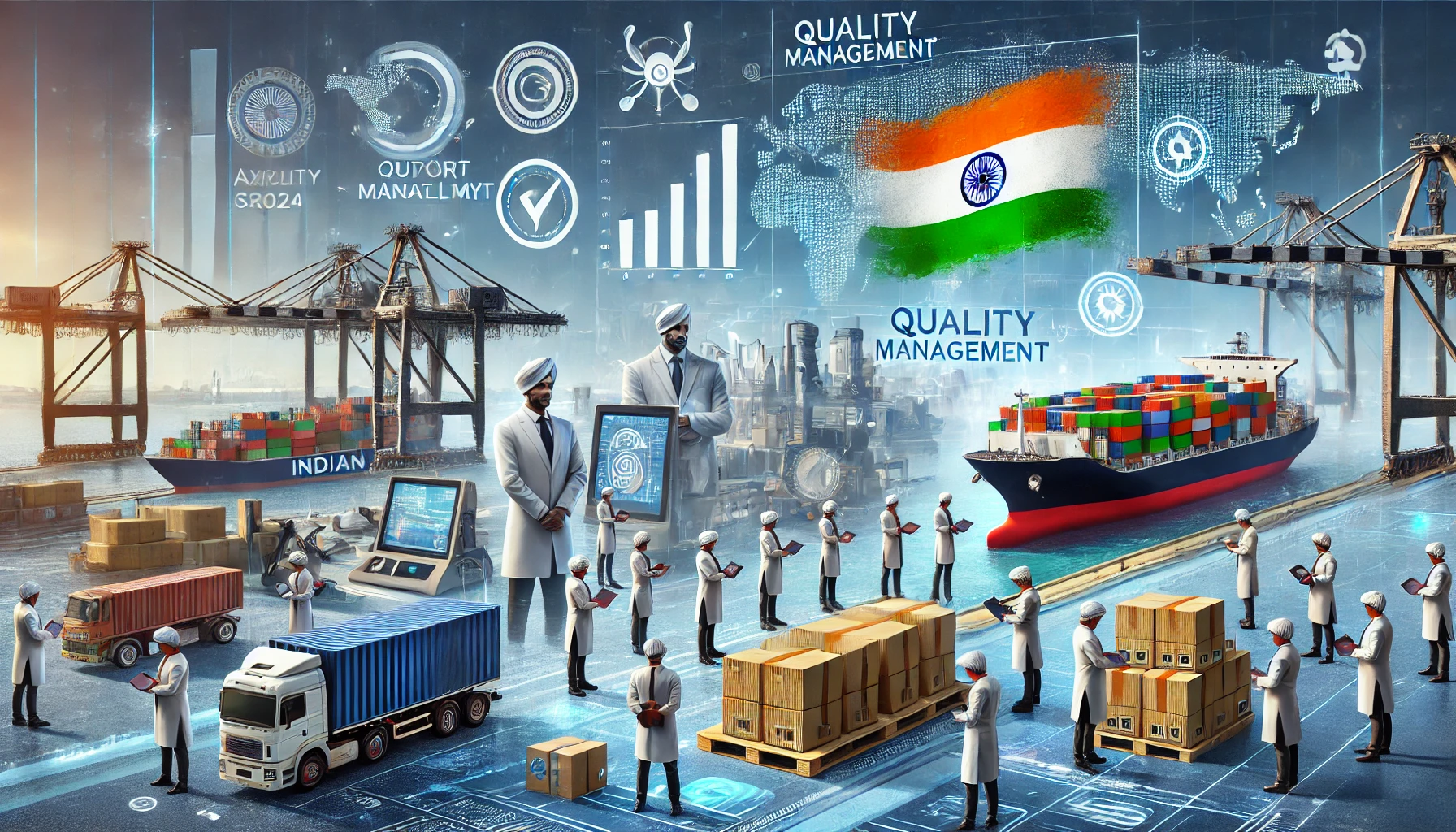Understanding the Importance of Branding for Indian Exports
In the contemporary global marketplace, the significance of branding cannot be overstated, particularly for Indian products seeking to expand their reach.
A strong brand facilitates recognition among consumers, which is essential when competing with numerous international entities.
For Indian exporters, establishing a reputable brand identity allows for differentiation in crowded markets, ultimately driving consumer preference and choice.
Branding plays a pivotal role in building trust and credibility.
When consumers recognize a brand, they are more likely to associate it with quality and reliability, factors that significantly influence purchasing decisions.
This perception is especially vital for Indian businesses, as they often face competition from well-established brands in various sectors.
By investing in branding strategies, Indian exporters can communicate the unique qualities of their products, such as cultural heritage or distinct craftsmanship, which enhances their appeal and sets them apart from competitors.
Moreover, effective branding contributes to customer loyalty. Consumers who identify with a brand are more likely to make repeat purchases, fostering long-term relationships.
This loyalty is crucial for Indian products looking to penetrate global markets, as it not only secures a stable customer base but also encourages word-of-mouth referrals.
As the Indian export sector continues to grow, creating brand advocates among consumers becomes increasingly important for sustaining market presence.
Lastly, a strong brand can attract new customer segments and expand market share.
By aligning branding efforts with global trends and customer preferences, Indian exporters can tap into niche markets and respond effectively to diverse consumer needs.
Well-executed branding allows businesses to communicate their value propositions clearly, thereby enhancing their overall competitiveness in international arenas, leading to increased sales and profitability.
Identifying Your Unique Selling Proposition (USP)
To effectively compete in global markets, it is crucial for brands exporting from India to identify and articulate their unique selling proposition (USP).
The USP serves as a distinctive factor that sets a brand apart from competitors and helps consumers understand why they should choose one product over another.
Indian products often possess qualities rooted in the country’s rich heritage, cultural significance, and commitment to quality, all of which can contribute meaningfully to a brand’s USP.
When establishing a USP, businesses should first consider the unique characteristics of their products.
For instance, Indian textiles, such as silk and cotton, often boast traditional handwoven techniques passed down through generations.
This craftsmanship not only signifies quality but also reflects the cultural history and values associated with the craft.
Highlighting such elements can create a compelling narrative that resonates with international consumers seeking authenticity.
Another important aspect to consider is the evolving consumer preferences in global markets.
There is an increasing demand for sustainable and ethically produced goods. Indian exporters can leverage this trend by emphasizing organic materials, fair trade practices, and environmentally-friendly production processes.
By aligning their USP with contemporary values, brands can appeal to discerning customers while reinforcing the global viability of Indian products.
Furthermore, the rising interest in global culinary traditions also presents an opportunity for Indian food products.
Unique spices and authentic flavors can be a key differentiator. By branding these items as not just food products but carriers of India’s culinary heritage, companies can significantly enhance their appeal in foreign markets.
In conclusion, clearly identifying and communicating a brand’s unique selling proposition is vital for Indian products looking to thrive in international markets.
By focusing on quality, heritage, cultural significance, and contemporary consumer values, Indian exporters can effectively position their offerings as standout choices in a competitive landscape.
Crafting a Compelling Brand Story
Creating a compelling brand story is essential for establishing a strong presence in global markets, especially for Indian products aiming to succeed through export from India.
A well-crafted narrative not only captures the essence of the brand but also evokes emotions in potential customers, making it easier for them to relate to the product.
To start telling an engaging brand story, one must first identify the core values and unique selling propositions that set the brand apart.
This requires a thorough understanding of the target audience and their preferences, as well as the cultural nuances of the markets where these products will be exported.
Incorporating personal anecdotes or testimonies can enhance the authenticity of the brand’s narrative.
Highlighting the journey of the brand—from its inception to the present state—allows global audiences to connect with the brand on a deeper level.
For instance, sharing stories about traditional craftsmanship, the artisans behind the product, or how the brand is committed to sustainability can resonate significantly with end-users who value ethical practices.
Additionally, visual storytelling using high-quality images or videos can further enrich the narrative and make it more engaging for the audience.
Another effective strategy is to build a narrative around the lifestyle associated with the brand.
Demonstrating how Indian products can be integrated into various cultural contexts can help international customers envision their role in their everyday lives.
This not only strengthens the emotional connection but also enhances brand loyalty by aligning the brand with the aspirations and values of consumers.
Ultimately, crafting a compelling brand story is about creating an immersive experience that fosters trust and encourages customers to choose Indian products over local alternatives.
Through these strategies, brands can successfully navigate the complexities of global markets and effectively promote their export from India.
Utilizing Digital Marketing Strategies for Global Reach
In the era of globalization, export from India has gained significant traction, necessitating the adoption of effective digital marketing strategies to enhance brand visibility on international platforms.
Digital marketing serves as a powerful tool that can facilitate the promotion of Indian products to global consumers.
One of the pivotal aspects of this strategy is leveraging social media channels. Platforms such as Facebook, Instagram, and LinkedIn enable brands to engage with a diverse audience, showcasing their products and building relationships with potential customers around the world.
Content marketing is also essential in establishing a strong brand presence.
By creating high-quality, relevant content that resonates with international consumers, brands can effectively communicate their value propositions.
This might include blogs, videos, and infographics that tell compelling stories about the brand and its offerings.
Quality content not only enhances brand credibility but also improves search engine rankings, thereby driving organic traffic to the website.
Additionally, implementing search engine optimization (SEO) practices can help brands appear in search results when potential international customers look for products related to their interests.
Online advertising is another critical component of a robust digital marketing strategy. Investing in pay-per-click (PPC) advertising and targeted social media ads can help brands reach specific demographics, enhancing their marketing effectiveness.
By strategically placing ads where potential customers spend their time online, brands can maximize their exposure and boost their chances of converting leads into loyal customers.
Moreover, it’s important to analyze data and monitor campaigns, ensuring that marketing efforts are continually refined and optimized for better performance in the global marketplace.
Designing Effective Branding Elements
In the context of exporting products from India, the visual branding elements play a crucial role in creating a strong, recognizable brand in global markets.
Effective branding is essential not only for differentiation but also for establishing trust with potential consumers.
Key components such as logos, color schemes, and packaging design serve as the first point of contact between the brand and its audience, making their design imperative to brand identity.

The logo is often considered the face of a brand. It should embody the essence of Indian products while being adaptable for varied global markets.
A well-designed logo should be simple, memorable, and versatile, allowing for effective application across multiple platforms, including online and offline media.
Colors also carry significant cultural meanings, and in the context of international branding, selecting a color palette that resonates well globally is vital.
For instance, while red symbolizes good fortune in India, it may have different connotations in other cultures. Therefore, conducting thorough research on color perceptions is crucial when aiming to export from India.
Moreover, packaging design cannot be overlooked as it often influences the consumer’s choice at the point of sale.
Packaging should not only protect the product but also convey the brand’s story and values effectively. Innovative and sustainable packaging can also attract global consumers who prioritize environmentally friendly products.
Incorporating elements that reflect the unique cultural aspects of Indian heritage can help in crafting an appealing narrative that connects with diverse audiences.
Furthermore, consistency across all branding platforms enhances brand recognition. Whether it is the website, social media, or product packaging, uniformity in design elements strengthens the overall branding effort.
By ensuring that visual branding elements align with the brand’s core identity, businesses aiming to export from India can successfully create a strong presence in international markets.
Building Strategic Partnerships and Collaborations
In the context of enhancing the visibility and credibility of Indian products within global markets, building strategic partnerships and collaborations is paramount.
Partnerships with local influencers and brands can provide vital insights into consumer preferences and market dynamics that are unique to each territory.
By aligning with established names in these markets, businesses exporting from India can leverage their partner’s understanding of the cultural landscape to craft targeted marketing strategies.
To initiate these partnerships, companies should first identify potential collaborators whose values align with their brand.
This could involve researching local influencers who have a well-established rapport with their audience, as well as brands that complement their offerings without being direct competitors.
Engaging with local businesses can also provide insights into supply chain logistics and distribution channels, enhancing the overall efficiency of export from India.
Furthermore, companies should strategically reach out to potential partners through various channels such as social media, networking events, and trade expos.
Presenting a clear value proposition is critical; businesses should express how this partnership can benefit both parties involved. Effective communication of shared goals and mutual benefits can foster a more inviting environment for collaboration.
Once a partnership is established, maintaining an open line of communication is key. Regular check-ins, feedback sessions, and collaborative planning can create a solid foundation.
Moreover, businesses should remain flexible to adapt to changing market conditions and consumer responses.
By embracing a collaborative approach, Indian products stand a better chance of gaining traction and building a strong reputation in international markets.
Adapting to Cultural Differences
In today’s globalized economy, businesses aiming to export from India must recognize the critical importance of cultural sensitivity when developing their branding strategies.
Understanding the cultural nuances of diverse markets can significantly influence how products are perceived and accepted by consumers.
Therefore, thorough research is essential to ensure that branding resonates positively within each specific cultural context.
One effective method for adapting branding strategies is to conduct comprehensive market research.
This involves gathering insights into local customs, traditions, and consumer behaviors specific to each target market.
Businesses can utilize various methodologies, such as surveys, focus groups, and market analysis, to collect relevant data.
Engaging with local partners or stakeholders can provide valuable knowledge, ensuring that the export from India aligns closely with the cultural expectations and preferences of the local audience.
Another significant aspect involves the localization of branding elements, including logos, slogans, and packaging designs.
It is essential to ensure that these elements are not only aesthetically appealing but also culturally appropriate.
For example, colors and symbols may have different meanings across cultures; thus, what is considered attractive in one region may not hold the same connotation in another.
Localizing content helps prevent misunderstandings and misinterpretations that could adversely affect brand perception.
Moreover, language plays a vital role in branding.
Utilizing local dialects or languages can foster better connections with consumers, showing respect for their culture and enhancing brand relatability.
Employing native speakers in the translation of marketing materials ensures that the messaging remains authentic and effective.
By being mindful of these cultural differences and tailoring branding strategies accordingly, Indian exporters can enhance their chances of successfully penetrating international markets and establishing a strong presence globally.
Measuring Brand Performance and Market Response
To build a strong brand for Indian products in global markets, it is vital to measure brand performance effectively.
Key performance indicators (KPIs) serve as crucial metrics for assessing how well a brand resonates with international consumers.
These indicators can include brand awareness, customer engagement, sales growth, and market share.
Monitoring these aspects provides valuable insights into brand health and the overall effectiveness of marketing strategies employed to promote export from India.
One robust method to track brand performance is through the utilization of customer feedback. Engaging with consumers through surveys, social media interactions, and online reviews can reveal perceptions and expectations about Indian products.
This direct feedback is instrumental in understanding customer preferences, which can inform future branding initiatives.
Furthermore, leveraging analytics tools can help decipher data patterns concerning consumer behavior, revealing areas where the brand performs well and where improvements are necessary.
Tools like Google Analytics, social media analytics, and customer relationship management (CRM) systems can be integrated into a brand’s performance measurement strategy.
These platforms enable businesses to observe how effectively their branding efforts are translating into market engagement and sales.
Additionally, employing segmentation analysis allows brands to identify specific customer demographics that respond positively to their products, fostering targeted marketing strategies for global outreach.
Data-driven decisions are paramount for optimizing brand strategy.
By continuously analyzing these KPIs and consumer feedback, businesses can pivot their approach, ensuring that their brand not only thrives in the Indian market but also successfully competes on a global stage.
Establishing a framework for evaluating brand performance not only validates current strategies but also highlights new opportunities for enhancing brand visibility abroad, ultimately facilitating greater opportunities for export from India.
Future Trends in Global Branding for Indian Products
As we move forward into 2024, the landscape of global branding for Indian products is poised to undergo significant transformations influenced by various factors.
Technological advancements, shifts in consumer behavior, and a growing emphasis on sustainability are among the key trends shaping the future of branding strategies for Indian exporters.
Firstly, technology is playing an increasingly crucial role in branding efforts.
The rise of e-commerce platforms and digital marketing tools has enabled Indian brands to reach a wider international audience and communicate their unique value propositions effectively.
Utilizing data analytics and artificial intelligence can help brands understand consumer preferences and tailor marketing campaigns accordingly.
Indian exporters must harness these tools to create personalized experiences that resonate with global consumers, ensuring that their products stand out in a competitive market.
Secondly, there has been a noticeable shift in consumer behavior, particularly among millennials and Gen Z consumers who prioritize authenticity and social impact.
Indian products that reflect rich cultural heritage, craftsmanship, and ethical practices are more likely to appeal to these segments.
Brands should focus on storytelling that emphasizes their origins and values, thereby forging deeper connections with consumers.
Additionally, the demand for transparency in sourcing and production processes is rising, and brands need to be prepared to demonstrate their commitment to ethical practices, which can enhance consumer trust.
Lastly, sustainability is becoming a non-negotiable criterion for brands looking to capture the global market.
Consumers are increasingly aware of the environmental impact of their purchases and prefer products that adhere to sustainable practices.
Indian exporters should integrate sustainable practices in their branding strategies, such as using eco-friendly packaging or sourcing raw materials responsibly.
By aligning their branding with sustainability goals, Indian products can appeal to environmentally-conscious consumers in the global marketplace.











